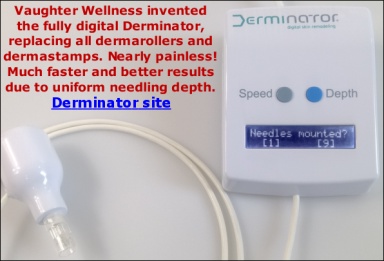The killing capacity of an alcohol solution increases with the duration (and temperature), so you should perhaps soak the roller overnight, that makes an enormous difference to merely soaking 20 minutes or so. (You have to think in the lines of 99.9999% vs. 99.999% - a tenfold increase in effectiveness.)
Betadine is a powerful alternative or additional sterilizing agent - better than alcohol, however it may stain the roller. This is harmless but ugly. You can also use it on your skin before rolling, but to wipe it off before rolling. Do not use Betadine if pregnant or breastfeeding.
Many forget that how you store the roller is at least as important as how you sterilize the roller. I've seen someone keeping the roller in its box but without the lid, on top of her washing machine. Next to the washing machine was the toilet.
I've read somewhere that every time you go for a #2 and flush, that many invisibly small water droplets are sprayed out. If they land on the roller - especially when you leave it for a month, there, you can get nasty surprises.
Treat the roller with the respect it deserves - it's a medical instrument. When in doubt, discard it. I mean, if you drop it in the toilet bowl or onto your dog, do not try to sterilize it. There are limits.
Then again, millions of people are dermarolling and you can be very sure that anything that can possibly go wrong, will, one day, and that the story will be for everyone to read on the Internet. I have yet to hear about the first such incidence with our customers, and hope I'll never will :-)
The best disinfectant for skin is Betadine liquid or cream (containing Povidone-iodine). Wash the Betadine off with tap water before you roll and don’t forget to clean your hands with soap before you touch your face. Betadine is for sale in Pharmacies as well as online. You can also use Chlorhexidine (around 2%).
https://http://forums.owndoc.com/dermarolling-microneedling/can39t-find-proper-disinfection-alcohol/




